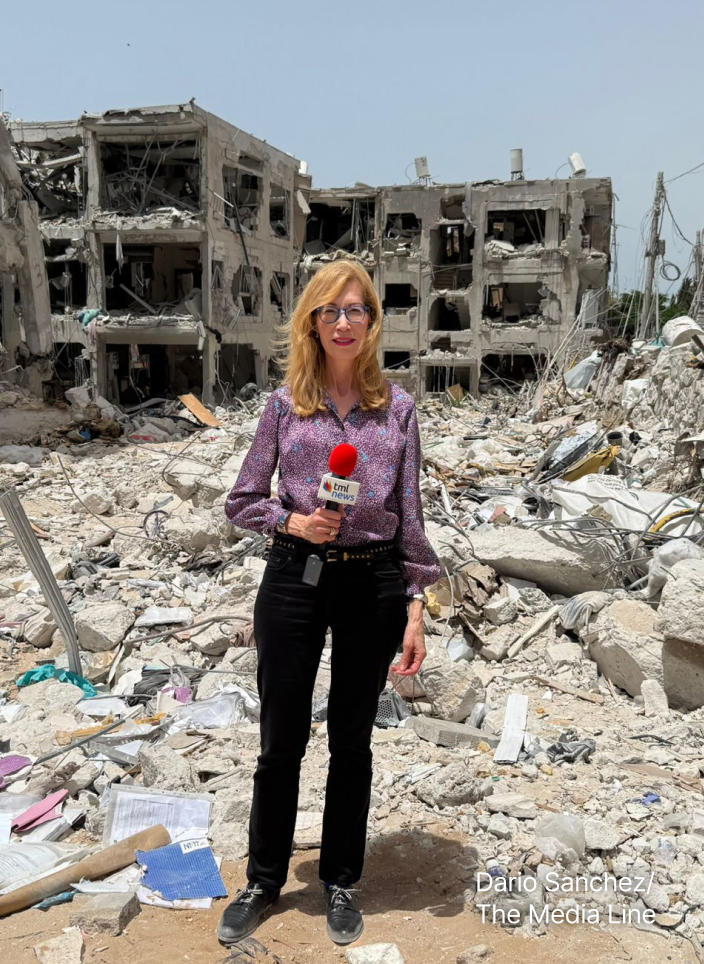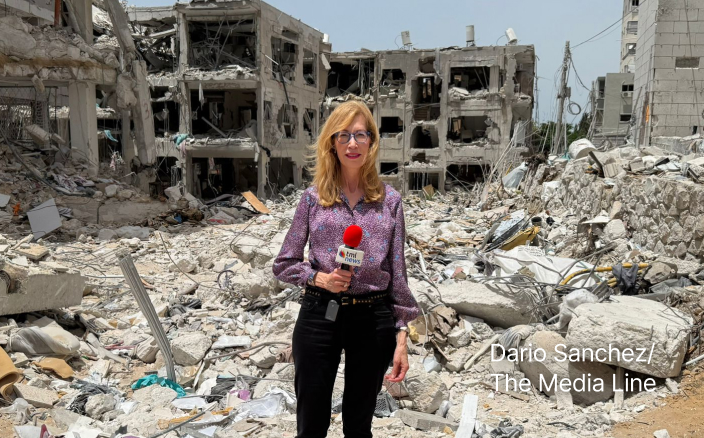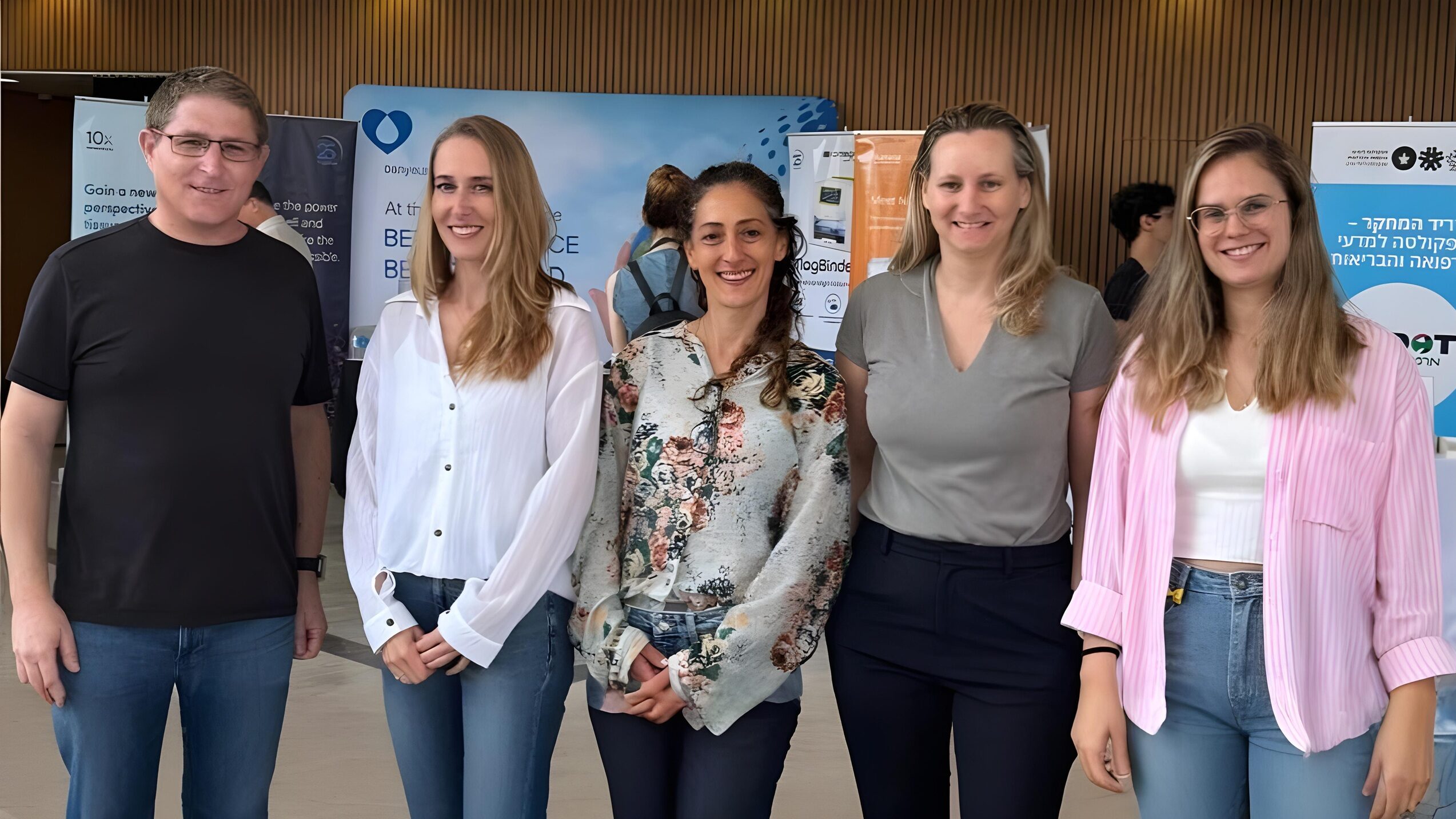Israeli Researchers Develop Skin Graft Technology That Halves Healing Time
Inspired by wartime injuries, the bioengineered skin sheet could also aid treatment of ulcers, diabetes wounds, and other skin conditions
Motivated by the number of burn victims from the ongoing war, researchers at Tel Aviv University and Sheba Tel-HaShomer Medical Center developed technology that heals skin injuries twice as fast.
Though researchers said there are still more steps that need to be taken before clinical trials on humans can be conducted, including testing on larger animals such as pigs, and receiving governmental approval, they are optimistic about its possible future applications.
“I think the main advantage is that it can save time,” said Tel Aviv University’s Lihi Adler-Abramovich, who led the study along with doctoral student Dana Cohen-Gerassi.
Cohen-Gerassi said time is critical for treating burn victims.
It’s an open wound, and the most dangerous thing is infection. If the wound got infected, it can lead very fast to death. So it’s very important to do everything very fast.
“It’s an open wound, and the most dangerous thing is infection. If the wound got infected, it can lead very fast to death,” she told The Media Line. “So it’s very important to do everything very fast.”
Researchers noted the urgent need to improve treatment for burn injuries because of the war.
Ayelet Di Segni, who directs Sheba’s tissue bank, was among the study’s collaborators. “The situation in Israel in the past two years increased the flow of patients, and we saw very severe soldiers, wounded soldiers that came and were admitted in our department,” she told The Media Line. “We were motivated to find a superior solution, a superior treatment approach.”
She said Sheba Medical Center is the only hospital in Israel with a defined burn unit.
The burn unit and the burn area in Israel is very poor. Most burn units are part of the plastic reconstruction department. There are many few specialists in Israel at all.
“The burn unit and the burn area in Israel is very poor. Most burn units are part of the plastic reconstruction department,” she said, explaining the specialization required for burn treatment. “There are many few specialists in Israel at all. Here at Sheba, we have two.”
Give the gift of hope
We practice what we preach:
accurate, fearless journalism. But we can't do it alone.
- On the ground in Gaza, Syria, Israel, Egypt, Pakistan, and more
- Our program trained more than 100 journalists
- Calling out fake news and reporting real facts
- On the ground in Gaza, Syria, Israel, Egypt, Pakistan, and more
- Our program trained more than 100 journalists
- Calling out fake news and reporting real facts
Join us.
Support The Media Line. Save democracy.


The most common method of treating severe burn injuries is using autograft, which involves harvesting skin from a different part of the same patient, Adler-Abramovich said.
“The problem is if a patient has a large surface area of burns, then we cannot find enough skin to harvest,” she told The Media Line.
Cohen-Gerassi also explained that this creates a new wound for the already suffering patient.
Another treatment method involves using a sample of cells from the patient and mouse-derived cells to grow skin patches, Adler-Abramovich explained.
“This method is a life-saving procedure. It serves us to treat severely burned patients,” Di Segni said. “However, it has a lot of limitations.”
Cohen-Gerassi said the skin patches grown through this method shrink in size and are fragile, difficult to handle, and not very effective. “We offered a new solution. We developed a skin sheet that does not contract, very easy to handle, strong, flexible, and it mimics the properties of native skin,” she said.
The alternative method requires numerous skin patches for severe cases, requiring a lot of time and money, Cohen-Gerassi explained.
“Even in cases of like 97% of the body that is burned, that we had this situation in Israel, unfortunately, then you need to prepare 30, 50 plates like this,” she said. “In our method, you create a sheet exactly in the shape of the skin of the patient. …It can fit exactly to the patient’s wound size.”
Adler-Abramovich said this technology is exciting because it allows the cells to automatically create skin layers, reducing growth time. There is also a reduction in healing time.
“We can speed it up twice the time of the current solution that exists. If the wound is closed after eight days, we manage to close the wound after just four days,” Cohen-Gerassi said.
She also said it not only improved healing time, but also the quality and functionality of the skin. “The scar tissue that is formed looks much better than without this treatment. We can actually see hair follicles,” she explained.
The long hospitalization times usually required for burn victims provided motivation for the research, Di Segni said.
The period of hospitalization is the longest in the book. For every percentage of burn, they are hospitalized usually for three days.
“The period of hospitalization is the longest in the book,” she said. “For every percentage of burn, they are hospitalized usually for three days.”
A patient with 70% of their body surface area burned will be hospitalized for more than 200 days, she explained.
“I think if we can suggest the technology that shortens the time that people have to stay in the hospital, it’s definitely a big advantage,” Adler-Abramovich said.
Beyond being used for treating burn injuries, this technology can help treat diabetes wounds, ulcers, and other skin problems, she explained. “I think that it can also change the entire market of wound dressing,” she said.
She said the technology can be used for other organs, including bone tissue regeneration.
More steps need to be taken before this technology can be tested on humans, but Adler-Abramovich is excited about the impact it can have on treatment for burn victims.
“These kinds of burns can cause death,” she said. “I think that what is very exciting is this is something that can not just change the quality of life, but rather even save people.”
Addie J. Davis is a recent graduate of the University of North Texas and an intern in The Media Line’s Press and Policy Student Program.

